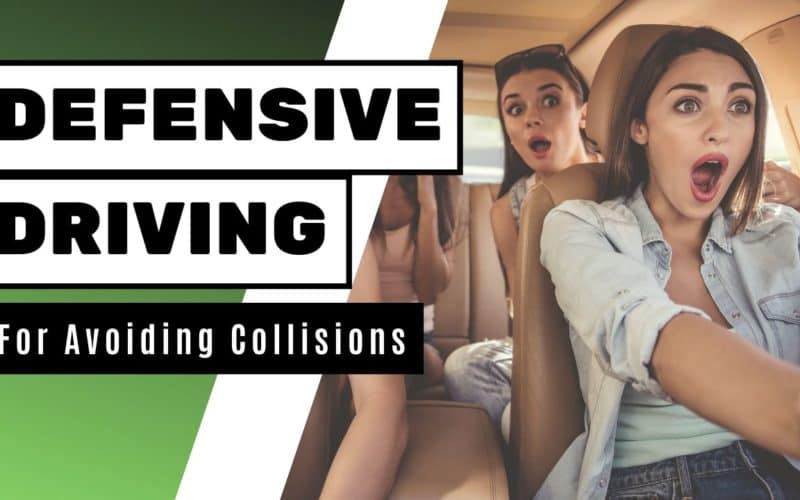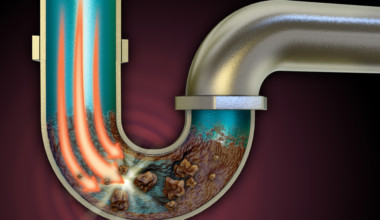Defensive driving sounds like it is part of some sort of stunt driving course, but it’s not. It’s about understanding the dangers of driving and knowing how to avoid them, whether that means preparing your route, your car, or yourself. This article discovers the ten practices for defensive driving to avoiding collisions.
Moreover, defensive driving is about planning your driving, being aware of the risks in traffic, and driving in a clear way. With defensive driving, the difficulty of your driving becomes much easier and the risk of the accident becomes significantly less.
It will also be easier for others in traffic to understand and predict what to do. So, here are ten practices for defensive driving to avoid collisions to help you get safely from A to B.
Table of Contents
Tips for Defensive Driving
1. Know where you are going
Defensive driving means knowing where you are going which is our first defensive driving tip to avoid an accident. If you’re going somewhere familiar, then you don’t need to worry. However, if you’re going somewhere new, you really should check the route.
You have a few options here. You can go old school and use a traditional map, but that does make things a little difficult. Your best bet is to use an app. However, remember that apps are not always correct, so take care when following directions.
2. Weather and road conditions
You must pay special care if you’re driving in poor weather for two reasons. Firstly, the weather can affect your visibility. For example, rain, snow, and fog can dramatically change how far you can see.
And you also need to think about how the weather has affected the roads physically. A few days of rain mixed in with heavy traffic can make a small pothole measurably larger. If you can’t see the surface of the road, drive slowly, even if there is no traffic to speak of.
3. Don’t drive to close
Weather also affects how much stopping distance is required. Remember, stopping distance changes depending on the weather, the state of the road, visibility, and how tired you are. That’s a lot to remember but forgetting could be costly.
To give you a few examples of defensive driving and how things can dramatically change, if a car is traveling at 20 mph, it needs about 3 car lengths to stop, 40 mph requires 9 car lengths, and 70 mph needs a staggering 24 car lengths. And that’s in good condition.
4. Nighttime driving
Defensive driving at night is more important than during the day. If you don’t have to drive at night, it’s probably best not to. However, if you need to drive, prepare yourself and your car. Knowing how to drive at night can save you a lot of trouble in the future.
Firstly, one safe driving practice is to make sure the windshield is clean so you can see as much as possible. Secondly, when driving, increase the distance between your car and the car in front. And don’t put your lights on high beam or you’ll dazzle oncoming drivers. And if you’re tired, for goodness sake, stop; no destination is that important.
5. Do not use your phone
Whenever you are driving you should always remember one thing. A car weighs over a ton and can kill in seconds. It is not a toy and should not be treated as one. So treat driving with the respect it deserves.
Defensive driving means not using your phone. A remarkable study from the UK showed that using a phone is more dangerous than drinking and driving because people are unaware of how much their phone is distracting them from driving safely.
6. Don’t drink and drive
I think I should probably mention this one immediately so that you don’t get some crazy idea that if using a phone is more dangerous than drinking under the influence, then drinking and driving is safe. It most certainly isn’t!
If you think you can drive just as well drunk as sober, you cannot. And when you get caught, you will not only lose your license but you could lose your job. Also, getting a job will be a lot more difficult because drinking under the influence shows future employers that you are really bad at decision making.
7. Keep your cool
Defensive driving also means not losing your temper, no matter what happens. When you are driving and you have a near-miss, keep things in perspective. After all, a near-miss is still a miss. Be thankful that you didn’t actually have an accident. So, keep your temper and no to aggressive driving.
Additionally, if you have an accident, especially if it’s a minor accident, there is absolutely no need to lose your cool. Get out of your car, make sure everyone is alright, and then exchange insurance details and so on. Behaving well changes a serious incident into an incident.
8. Know your blind spots
Your car has many blind spots but it is quite easy to eliminate most of them. The first thing is to make sure that your mirrors are correctly aligned. Before you start driving, adjust your rearview mirror and side mirrors so you can see in them properly.
When you start driving, check your mirrors a second time so that you are sure you are using them at their optimums. However, do not really on them all the time.
For example, when you’re maneuvering into another lane, you need to look over your shoulder. Your side mirrors will not give you all the information you need.
9. Think about other drivers
You may be one of the best drivers in the world but if the drivers all around you aren’t, then you could still be in trouble. Defensive driving means being aware of what everyone else is doing around you so you can react appropriately.
For example, when approaching a junction, if a car is waiting to turn right, don’t assume that the driver has seen you. Slow down just in case. And if there’s a lot of traffic and you’re driving slowly, why not let the driver out. Courteous drivers make roads safer for everyone.
10. Keep alert
Driving is a bit like golf. If you feel comfortable swinging a club, you’re doing it wrong. In other words, if you’re feeling relaxed and safe while you’re driving, you’re doing it wrong. In this situation, remember what you are in charge of.
Don’t forget that if your mind wanders, your speed may increase, and your stopping times will increase too. The UK government published figures a few years ago that said that a pedestrian hit at 20 mph has a 10% chance of being killed; at 40 mph, that 10% changes to 90%! Keep concentrating, no matter what.
And there you have it. Driving requires maturity and responsibility. And defensive driving is all about maintaining your car, thinking about the conditions, driving calmly and sensibly, and reaching your destination in one piece.





